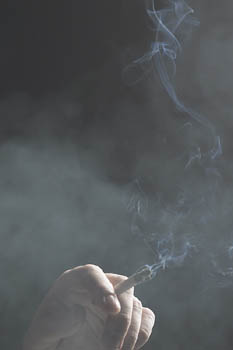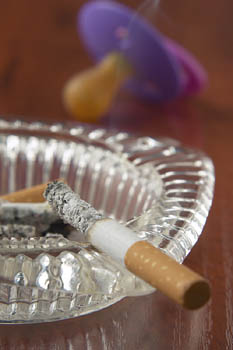What We Now Know about Secondhand Smoke
Even people who do not smoke can be harmed by smoke from those who do, according to The Health Consequences of Involuntary Exposure to Tobacco Smoke: A Report of the Surgeon General. This comprehensive scientific report concluded that there is no risk-free level of exposure to secondhand smok
The health effects of secondhand smoke exposure are more pervasive than we previously thought. Nonsmokers exposed to secondhand smoke at home or work increase their risk of developing heart disease by 25 to 30 percent and lung cancer by 20 to 30 percent. The finding is of major public health concern due to the fact that nearly half of all nonsmoking Americans are still regularly exposed to secondhand smoke.
Secondhand smoke contains more than 50 cancer-causing chemicals, and is itself a known human carcinogen. Nonsmokers who are exposed to secondhand smoke inhale many of the same toxins as smokers. Even brief exposure to secondhand smoke has immediate adverse effects on the cardiovascular system and increases risk for heart disease and lung cancer, the report says. In addition, the report notes that because the bodies of infants and children are still developing, they are especially vulnerable to the poisons in secondhand smoke.
The scientific evidence is now indisputable: secondhand smoke is not a mere annoyance. It is a serious health hazard that can lead to disease and premature death in children and nonsmoking adults. Smoking can sicken and kill, and exposure can cause heart disease and lung cancer in nonsmoking adults. Secondhand smoke exposure is also a known cause of sudden infant death syndrome (SIDS), respiratory problems, ear infections, and asthma attacks in infants and children, the report finds.
The good news is that, unlike some public health hazards, secondhand smoke exposure is easily prevented. The report says the only way to protect nonsmokers from the dangerous chemicals in secondhand smoke is to eliminate smoking indoors. Smoke-free indoor environments are proven, simple approaches that prevent exposure and harm. The report finds that even the most sophisticated ventilation systems cannot completely eliminate secondhand smoke exposure and that only smoke-free environments afford full protection.
Many states and communities have passed laws making workplaces, public places, restaurants, and bars smoke-free. But millions of children and adults still breathe secondhand smoke in their homes, cars, workplaces, and in public places.
Remember…..
- There is no safe amount of secondhand smoke. Breathing even a little secondhand smoke can be dangerous.
- Breathing secondhand smoke is a known cause of sudden infant death syndrome (SIDS). Children are also more likely to have lung problems, ear infections, and severe asthma from being around smoke.
- Secondhand smoke causes heart disease and lung cancer.
- Separate “no smoking” sections DO NOT protect you from secondhand smoke. Neither does filtering the air or opening a window.
Learn What You Can Do to fully protect yourself and your loved ones from the dangers of secondhand smoke.
Information contained in this article has been taken directly from “The Health Consequences of Involuntary Exposure to Tobacco Smoke: A Report of the Surgeon General”, U.S. Department of Health and Human Services, Centers or Disease Control and Prevention.
For more information:
Go to the Smoking and Tobacco health topic.
